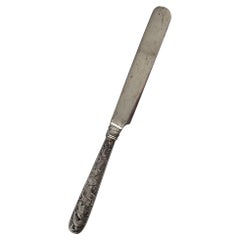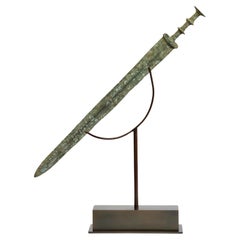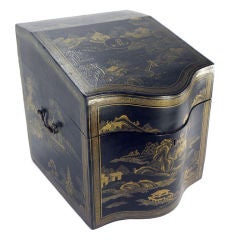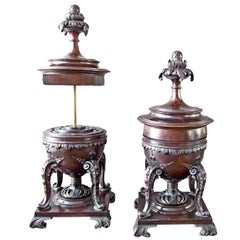Antique Chinese Knife
1880s Chinese Chinese Export Antique Chinese Knife
Sterling Silver
15th Century and Earlier Chinese Antique Chinese Knife
Bronze
Early 18th Century Dutch Antique Chinese Knife
Paper
Recent Sales
19th Century Chinese Antique Chinese Knife
19th Century English Antique Chinese Knife
Mahogany
Mid-19th Century Chinese Qing Antique Chinese Knife
Silver, Steel
Early 20th Century Asian Primitive Antique Chinese Knife
Metal
15th Century and Earlier Chinese Antique Chinese Knife
Bronze
15th Century and Earlier Chinese Antique Chinese Knife
Bronze
19th Century Chinese Qing Antique Chinese Knife
Bone
Early 20th Century Chinese Chinese Export Antique Chinese Knife
Silver
18th Century and Earlier Chinese Antique Chinese Knife
Lacquer
Mid-19th Century Antique Chinese Knife
Early 1900s Hong Kong Chinese Export Antique Chinese Knife
Sterling Silver
People Also Browsed
15th Century and Earlier African Antique Chinese Knife
Bone
1930s Japanese Antique Chinese Knife
Fabric, Glass
Early 1800s Italian Other Antique Chinese Knife
Wrought Iron
21st Century and Contemporary Portuguese Mid-Century Modern Antique Chinese Knife
Onyx, Carrara Marble, Statuary Marble, Brass
18th Century Asian Edo Antique Chinese Knife
Copper, Iron
20th Century American Mid-Century Modern Antique Chinese Knife
Wood, Birch
18th Century Japanese Antique Chinese Knife
Iron
15th Century and Earlier Egyptian Antique Chinese Knife
Limestone
1970s Italian Space Age Antique Chinese Knife
Fiberglass
Mid-19th Century English High Victorian Antique Chinese Knife
Other
19th Century Japanese Meiji Antique Chinese Knife
Metal, Copper, Steel, Iron
Early 1900s Japanese Meiji Antique Chinese Knife
Metal, Iron
21st Century and Contemporary German Mid-Century Modern Antique Chinese Knife
Metal
19th Century Belgian Gothic Revival Antique Chinese Knife
Art Glass, Stained Glass
1850s British Victorian Antique Chinese Knife
Other
1820s English Antique Chinese Knife
Metal
Antique Chinese Knife For Sale on 1stDibs
How Much is a Antique Chinese Knife?
- 1stDibs ExpertNovember 4, 2024To identify antique Chinese furniture, look carefully at its details. Chinese craftsmen often built furniture using mortise and tenon joinery, eliminating the need for nails and screws. If you see this type of hardware, your piece is likely not at least 100 years old, especially if the hardware still looks new and shiny. Since antique furniture was handmade, you will normally see slight imperfections, such as tool marks or slight variations in carvings. Pieces that appear completely uniform and pristine are less often genuine antiques.
When present, maker's marks can also be helpful. Research the marks to learn more about when the maker was active and producing pieces like yours. Alternatively, you can have a certified appraiser or experienced antique dealer evaluate your furniture for you.
Shop an assortment of antique Chinese furniture.  Lotus GallerySeptember 23, 2020
Lotus GallerySeptember 23, 2020The best way to know is to take it to an expert, such as an appraiser, reputable dealer or auction house, or museum
 PAGODA REDOctober 7, 2020
PAGODA REDOctober 7, 2020To determine the age of a Chinese furniture piece, look carefully at the joinery and finish. Natural expansion and contraction of the wood over time will cause a joint to protrude or retract, distorting a once-seamless fit. Antique lacquer finishes become crackled and worn over time. Areas of exposed wood, such as the underside of a table, the footrest of a chair, or the back of a cabinet should appear raw and dry compared to the finished surface. With use, the legs of tables and chairs become weathered near the bottom from precipitation and use.




